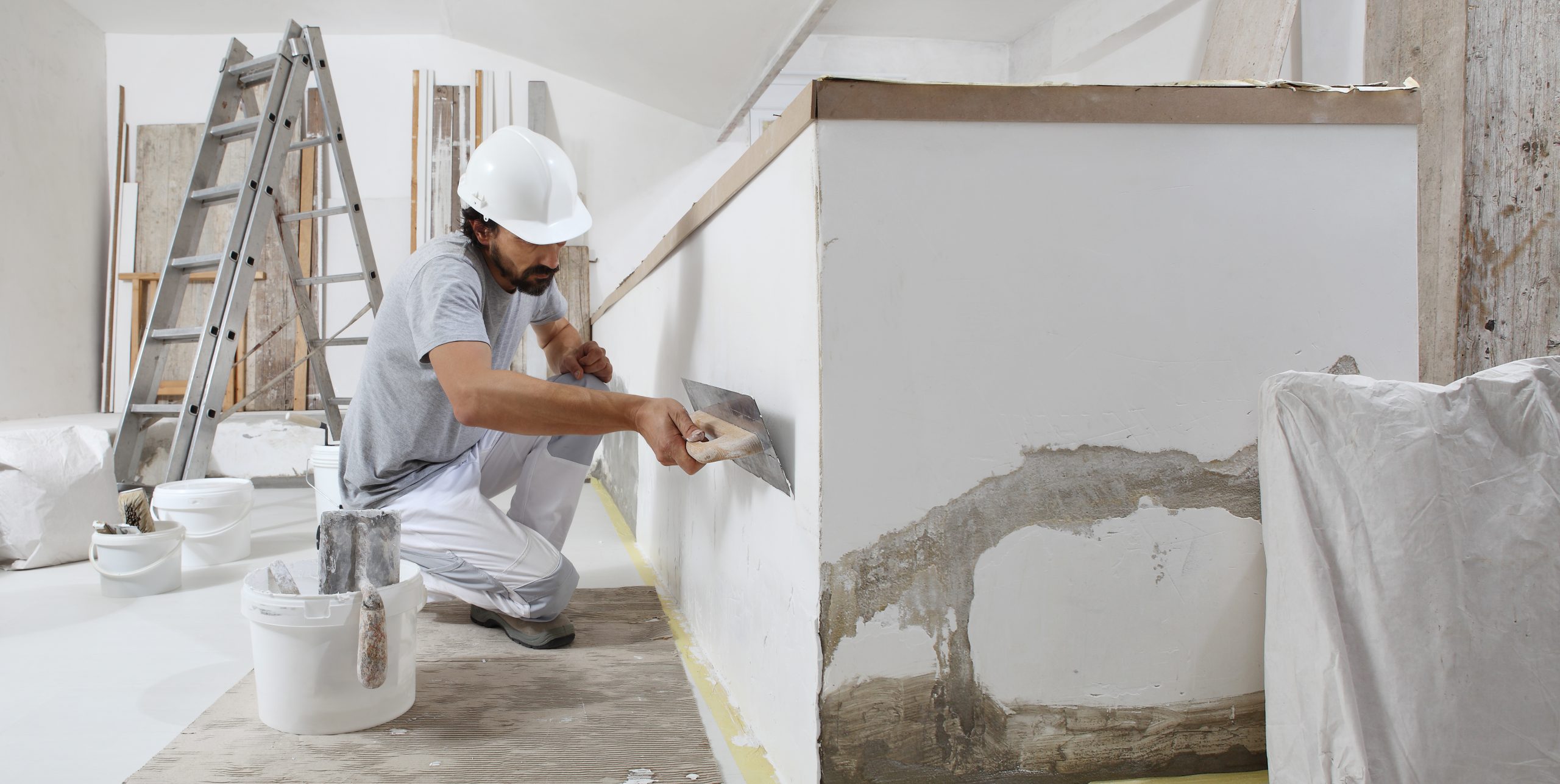Having an effective website builder is important for a painting contractor.
A well-constructed website serves as the foundation of your digital identity and plays an important role in how your painting business attracts and engages with potential clients.
This article explores why a strong website is important for painters and how it can transform casual visitors into loyal customers.
Importance of a Well-Built Website for Painters
1. Converting Website Traffic into Repaint Leads
A well-optimized website for painters is not just about aesthetics; it’s about functionality and conversion.
Using clear calls-to-action, a user-friendly website design, and engaging painting content not only makes your painting website more appealing but also guides visitors toward making a booking or inquiry.
2. Boosting Visibility Through SEO
Search engine optimization (SEO) is important for painters looking to increase their online visibility. Strategically designed artist websites with targeted keywords, such as “professional painters” and “art portfolio websites,” help your site rank higher in search engine results, making it easier for new customers to find your expert painting services.
3. Targeting the Ideal Audience
Identifying and targeting your ideal audience is important for the success of any painting website. By understanding your target audience, you can create your website’s content, from the gallery of past projects to the testimonials about your artistry, giving your potential buyers a more personalized user experience.
4. Optimizing Photos and Images
For a painting business, visuals are everything. A digital gallery on your painting website should showcase your art with high-quality images of your work. But it’s also important that your website images are optimized for fast loading times and SEO. This improves your user experience and enhances your site’s SEO performance.
How to Optimize Your Artist Website for SEO

As a painting contractor, your painting website not only showcases your painting projects but also serves as an important online tool for reaching potential clients and followers.
However, if your site isn’t optimized for search engines, you might miss out on valuable traffic for your potential clients.
Below, we will discover how you can enhance your painter’s website SEO to ensure it ranks well and attracts more visitors.
Utilize Descriptive, Keyword-Rich Titles and Tags
The title of your webpage and tags are important for SEO. They should include keywords that potential visitors might use to find your painting projects, such as the medium you work in, your style, or your geographical location.
For example, use titles like “John Doe – Contemporary Landscape Painter in New York” to capture specific searches.
Optimize Your Images
Websites for painters are image-heavy, which can impact the load time of your website. Optimize your images by compressing them without losing quality and use descriptive file names and alt text.
For example, instead of naming an image “IMG_1234.jpg,” rename it to “sunset-acrylic-painting-john-doe.jpg.” This helps improve page load times, and helps search engines understand and rank your content better.
Create Quality Content Regularly
Content is king in SEO. Regularly update your painting website with high-quality content that engages and informs your audience and potential customers. This could include blog posts about your creative process, upcoming exhibitions, or tutorials. Quality content will keep visitors on your site longer, reducing bounce rates and increasing the chances of conversion.
Use Social Media Integration
Use your social media with your website to boost your SEO efforts. This can help drive more traffic to your site as followers on social media discover your website. Additionally, regularly share your website content on social media platforms to encourage more external links, which can boost your site’s authority.
How to Showcase Your Work on Art Portfolio Websites

Creating an online painting portfolio is an important step for any painting company looking to showcase their work, reach new audiences, and secure professional opportunities.
Here’s a guide to help you make the most out of paint portfolio websites:
1. Choose the Right Platform
Select a platform that aligns with your needs and aesthetic preferences. Popular options include Squarespace, Wix, Behance, and Adobe Portfolio. These platforms offer customizable templates specifically designed for visual content, making them ideal for artists.
2. Curate Your Best Work
Quality over quantity is a key principle here. Include only your best paint projects that show your skills and unique artistic voice. Look for a diverse range of painting works that showcase your versatility, or choose to focus on a specific style or medium that best represents your artistry.
3. Tell Your Story
Your portfolio is not just about your work but also about you as a painter. Include an “About Me” section with a professional photo and a compelling biography. Share your painting business journey, your inspirations, and the processes behind your painting work. This personal touch can make your portfolio more engaging and relatable.
4. Organize Thoughtfully
Categorize your painting project by style or theme. Consider the flow of content, starting with your strongest work or the projects that most accurately represent your current focus.
5. Use High-Quality Images
Since the digital representation of your work is all visitors will see, make sure that all of your images are high- quality. Avoid cluttered or distracting backgrounds that could detract from showcasing your painting project.
6. Optimize for All Devices
Make sure your painting project portfolio looks great on all devices. Most website platforms offer responsive design, but it’s important to check how your portfolio appears on desktops, tablets, and smartphones. This helps a good viewing experience for every potential visitor or client.
7. Include Detailed Captions
Each painting project should have a caption providing the title, the materials used, the size, the year it was completed, and a short description or the story behind the work. This information can help viewers understand and appreciate your painting projects more deeply.
8. Update Regularly
Keep your painting portfolio fresh and up-to-date with your latest painting projects. Regular updates can encourage visitors to check your website for your residential or commercial painting projects.
9. Promote Your Portfolio
Use your social media channels, business cards, and networking events to promote your business painting portfolio. Including a link to your portfolio in your email signature can also be an effective way to get more eyes on your work.
10. Analyze Visitor Interaction
Most platforms provide analytics tools to track who is visiting your portfolio and how they interact with your content. Use this data to understand what works and what doesn’t, which can be helpful for further refining your painting portfolio.
Benefits of Having Your Own Website as a Painter
1. Complete Creative Control
With your own painting website, you have full control over how your work is presented to the world. Unlike social media platforms or third-party galleries, where formatting and display options are limited, a personal painting website allows you to design and organize your gallery in a way that truly reflects your style and preferences.
2. Professionalism and Credibility
A thoughtfully designed and visually attractive painting website sends a message of professionalism, reassuring potential clients of your commitment to your painting business. It creates a reliable place for displaying your painting projects, managing inquiries, and facilitating transactions, which in turn enhances your standing and trustworthiness in your local community.
3. Controlled Narrative and Branding
Your painting website acts as a platform to tell your story and share how you transform your client’s inspirations. This can create a stronger emotional connection with your audience, making your work more memorable and engaging.
Conclusion
A well-built painting website is an important marketing strategy for painting contractors looking to expand their customer base and establish their brand.
By focusing on SEO, conversion optimization, and targeted content, painters can effectively use their websites as powerful marketing tools to attract and retain clients.
Tired of Buying Shared Leads?
Generate your own unique leads with Sharp Line Marketing!
We specialize in helping residential painting contractors just like you. Contact us today to take control of your business growth and start seeing real results.
Contact Sharp Line Marketing Now!
FAQs
Why is SEO important for a painting website?
SEO helps increase your website’s visibility, making it easier for potential clients to find your painting services online when searching for related keywords.
How can a website convert visitors into leads?
By implementing clear CTAs, engaging content, and a user-friendly layout, a website can guide visitors toward booking services or making inquiries, effectively converting them into leads.
What should I feature in my painting website’s gallery?
Include a diverse range of your best works in the gallery to showcase your skills and attract a broad audience. Ensure the photos are high-quality and well-optimized for both visuals and speed.
How can I target my ideal audience through my website?
Understand who your ideal clients are and create content that speaks to their needs and preferences. This could include style-specific portfolios, testimonials, and service information that resonate with that particular group.
What makes a website user-friendly for potential clients?
A user-friendly website should have easy navigation, fast loading times, accessible contact information, and mobile responsiveness to ensure a seamless experience on any device.
